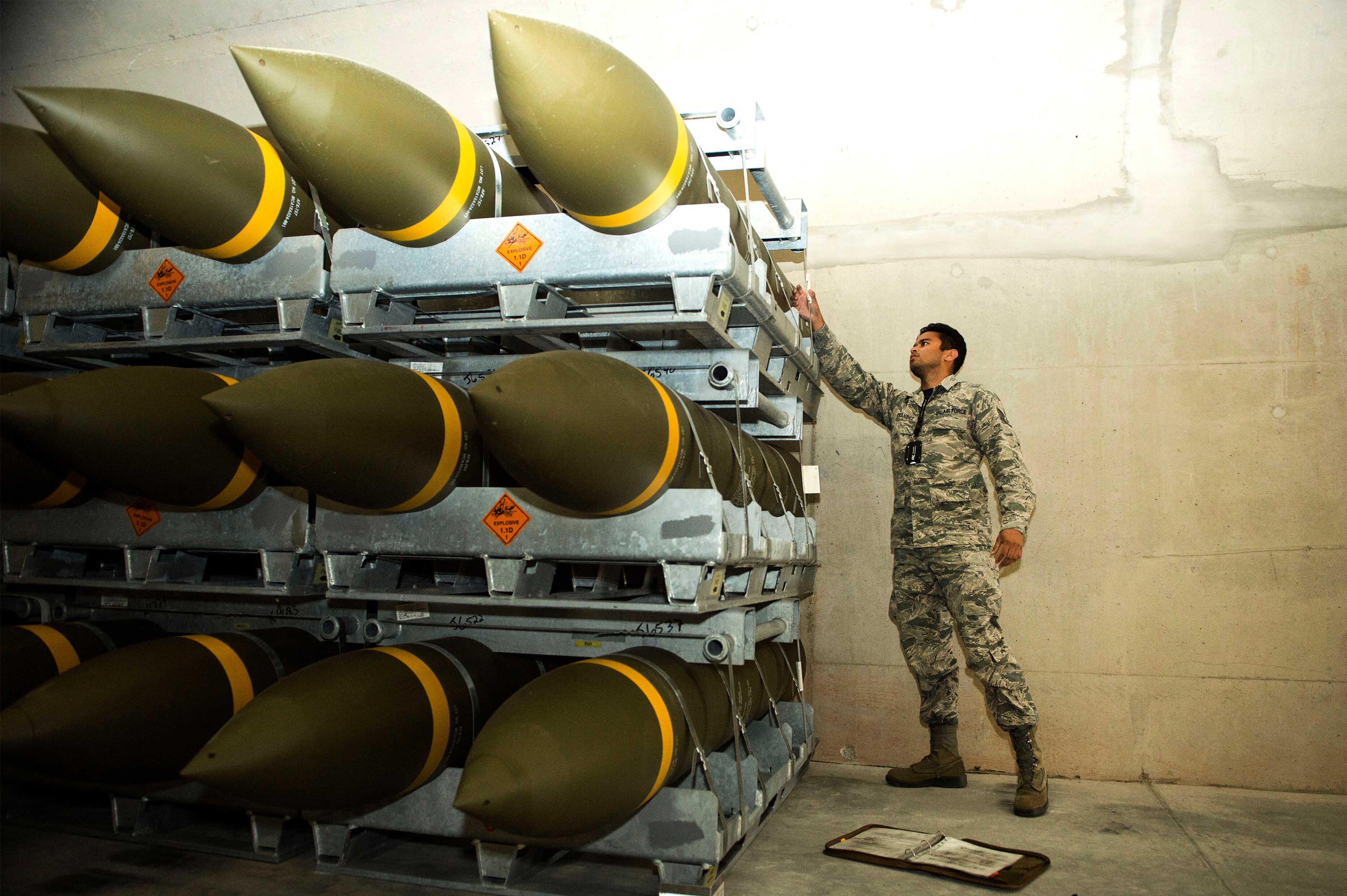WASHINGTON ― U.S. Army officials told lawmakers Tuesday they are seeking a new 15-year, $16 billion strategy to modernize and automate the military’s aging munitions plants following nearly a dozen worker deaths and injuries over recent years.
In Tactical Air and Land Forces Subcommittee testimony, Army officials suggested workers who handle dangerous materials could be replaced by robotics and computers as part of their ambitious plan. The testimony came as lawmakers are deliberating over a proposed reshaping of the Pentagon’s explosives oversight body, as part of the 2021 defense policy bill.
“We’re essentially making the explosives in a manner very much like we did in World War I in some cases, World War II in others,” Assistant Secretary of the Army for Acquisition, Logistics and Technology Bruce Jette told lawmakers. “We literally have people standing under machines that are full of 1,500 pounds of molten explosives, drooling it into artillery shells to fill them up, and then they push the carts away. We don’t have automation, we don’t have robotics.”
Lawmakers described the ammunition industrial base as fragile because of its dependence on foreign sources of materials and because its aging facilities need of safety upgrades. (Munitions production facilities are contractor operated, with some owned by the government.)
Army officials largely agreed, saying they rely on 55 foreign suppliers for certain equipment and materials ― such as a TNT-replacement 2,4-Dinitroanisole, which comes from India ― because costs, environmental regulations and legal liabilities make many of them harder to develop in the United States. The Army even relies on a small volume of detonators and pyrotechnics from China, Jette said.
The Army is studying how to wean itself from foreign suppliers. At the same time, Jette has not ruled out supplies from Canada, Mexico and elsewhere, if a surge is needed, adding that he personally visited a South Korean factory that once supplied the U.S. with bullets at .50 caliber and below.

Calling safety a top priority, Army officials said human handling of the energetics, explosives and acids associated with munitions can be replaced with “process automation or other technology solutions, freeing the workforce to focus on technical oversight.” More than 80 percent of major mishaps at munitions facilities were caused by human error, they said.
“Three deaths in the last ten years on our facilities, two of them were related to the manufacturing process: We don’t need to have that happen anymore,” Jette said. “I do not want to be the ASAALT and get another phone call that there’s another death on something I could have provided the improvement to.”
Jette said the 2017 death of Lake City Army Ammunition Plant worker Lawrence Bass, 55, “should not have occurred,” and that Bass ― killed while handling an explosive component called tetrazine ― was performing his duties in accordance with procedures.
“His death is in fact a catalyst in transforming our approach, as opposed to modernizing under current circumstances. He should never have been in that close proximity where that event could have happened,” Jette said. “Should it happen with a machine, I can buy another machine.”
Still, modernizing in the way Army officials seek would require Congress appropriate roughly $1 billion per year for 15 years, which is more than twice what the Army has asked over the last three years. It’s an open question whether Congress would be as inclined to support the munitions productions facilities, if they support fewer jobs.
“The idea of making it safer for workers, there’s no doubt about that, but because these plants have grown up since the ’40′s," said Tactical Air and Land Forces Subcommittee Chairman Donald Norcross, D-N.J. "You eliminate many of those jobs, there’s potential of that support also going.”
Asked what more industry could do to shoulder the cost of modernizing facilities, Jette suggested it would be better if the government made the investments upfront as industry would only pass the costs on later.
“This is the United States military’s industrial base for munitions. We need to own that, not have anything beholden IP-wise or any other way to the defense industry or any other supplier," Jette said.
Joe Gould was the senior Pentagon reporter for Defense News, covering the intersection of national security policy, politics and the defense industry. He had previously served as Congress reporter.





